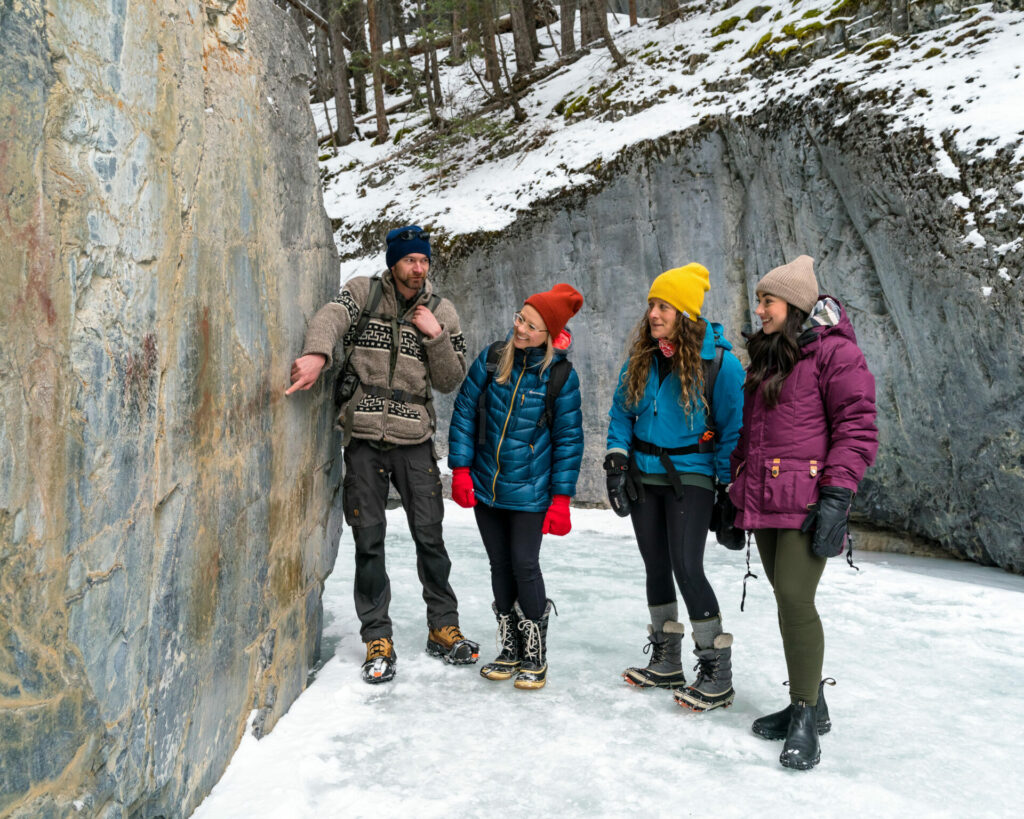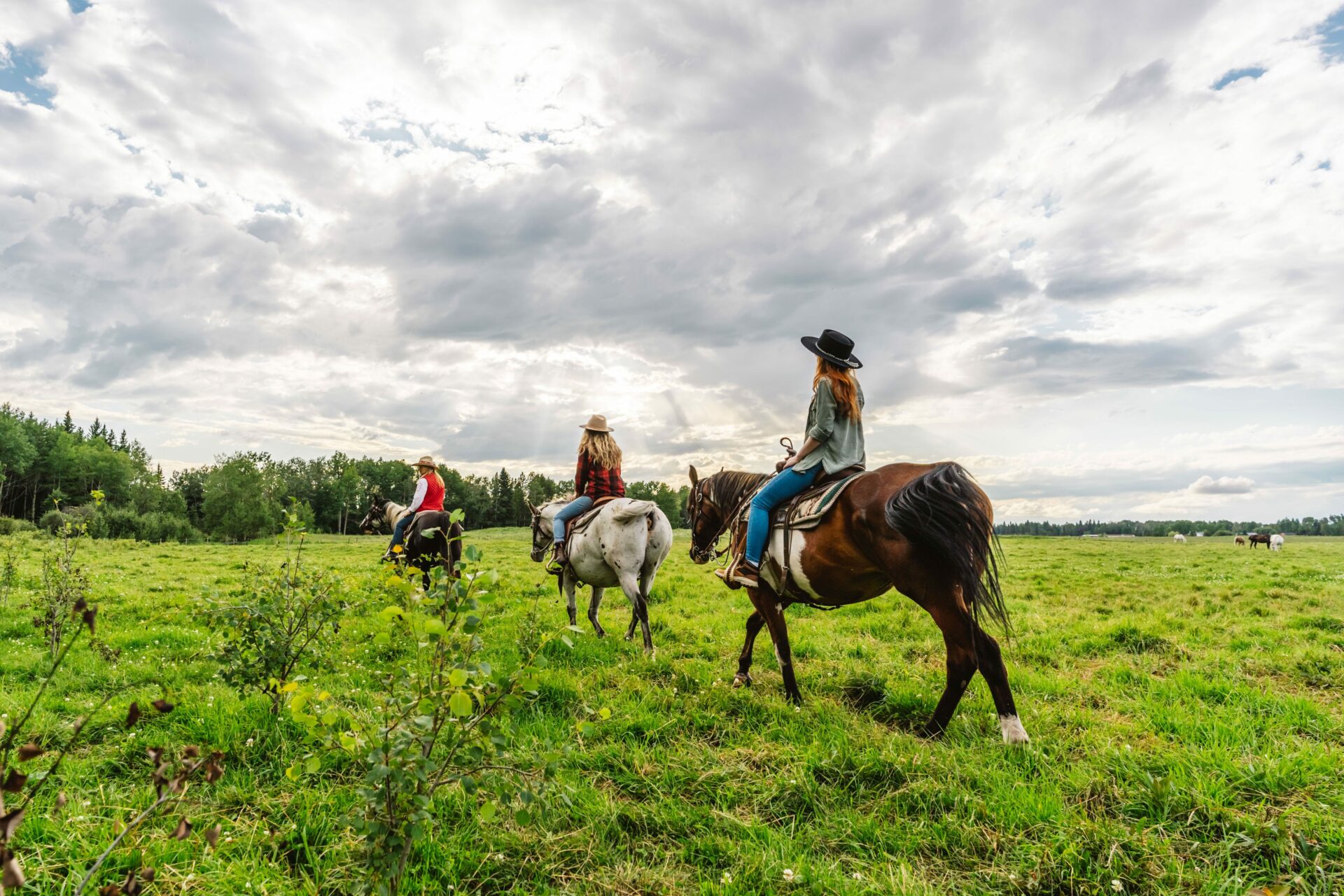
Guide’s knowledge gives depth and meaning to gorgeous Rocky Mountain landscapes
Mahikan Trails shares traditional knowledge of the land, nature and culture in stunning locations near Banff and Canmore
Michael Hingston
“Does anyone know what this is?”
Jordan Ede looks around our group for an answer, though I suspect he knows he isn’t going to get one. We’re standing in the woods near Grotto Canyon, a few minutes’ drive from Canmore. Many of us in the group are experienced campers, and we’re all wearing appropriate winter gear, which suggests at least a basic familiarity with the outdoors. But none of us can identify a simple plant just off the trail.
“It’s red willow,” Ede says, gently cupping the distinctly coloured stalk in his bare hands. (A born outdoorsman, Ede claims to have once gone an entire winter without once putting on a toque.) He goes on to explain that the red willow is a particularly important plant to this area. For thousands of years, Indigenous peoples used its wood to make their arrows. The thickest stalks, meanwhile, were saved for bows—which is what led to the nickname that now appears on maps and signs everywhere: the Bow Valley.
If not for Ede, we’d all have walked right past it, oblivious. But the story of the red willow is just the beginning of what he passes down to us over the course of our medicine walk and, later, our trek down into Grotto Canyon. Ede’s family is a mix of Iroquois, Cree, and Métis; his mom, Brenda Holder, founded Mahikan Trails, the only Indigenous-led tourism company in the area, back in 1995 as a way of sharing her traditional knowledge with the many people interested in the history of this pocket of Alberta.
Ede has been giving tours with Mahikan Trails for the past 20 years, and his connection to the land is obvious from our first steps onto the trail. He has a story for seemingly every plant we walk past, from buffaloberries (a key food source for bears, who will eat as many as 200,000 per day) to spruce trees (“A pharmacy, hardware store and grocery store all in one!”). Some of Ede’s knowledge of the Bow Valley comes from his professional life, but mostly this is information that his family has been using for generations. When Ede woke up in the middle of the night with a painful toothache, his mom treated it with the same propolis—a resin-like substance made by bees from poplar buds—that was in turn passed down to her.

Down in Grotto Canyon, we pull cleats over our boots and hike up the frozen waterway in search of something else that I’d have probably otherwise walked right past: a series of faded orange pictograms painted directly onto the limestone walls. These illustrations are roughly 4,000 years old and record a story from the Pelican Lake People. The meaning of that story, Ede says, isn’t completely clear, but it’s believed that the pictograms celebrate the canyon as a sacred site—a place where the mountain literally opened up to allow the Indigenous peoples to travel straight through to Lake Minnewanka. The presence of coyotes, a traditional trickster figure, in the pictograms suggests there was a lesson to be learned here, too.
As we come to a pair of stunning frozen waterfalls, Ede opens up his backpack and pulls out a thermos of piping-hot mint tea. In his culture, tea is the universal symbol of hospitality. “When you hear a knock on the door,” he says, “you put the kettle on.” There are no doors out here, but for the next few minutes Grotto Canyon feels like home anyway.
